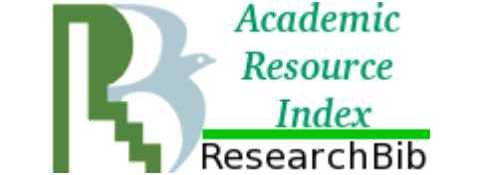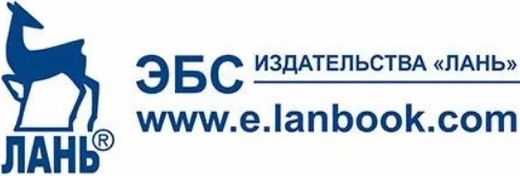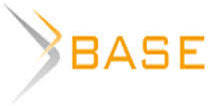CRITICAL NON-FUEL MINERAL RESOURCES IN GLOBAL MARKETS
Abstract
The paper analyzes the strategic positions of nations and supranational associations in the global markets related to the extraction and industrial use of minerals being of critical importance for the development of the most advanced technologies. The term "critical minerals" is used in the article to refer to non-fuel mineral resources that are indispensable in high-tech industries. The proposed methodology is based on the assessment of the critical mineral reserves as well as mine production and industrial consumption volumes of critical minerals as shares of the relevant global totals. A global index of strategic position regarding critical minerals for a given nation or a group of nations is calculated as the sum of resource, mine production, and industrial consumption estimates. Such estimates also allow one to assess the degree of nations’ potential dependence on foreign sources of critical raw materials. Being regularly updated, this information provides a relatively simple and easy-to-understand tool to inform industrial, international trade, and customs strategies. The described approach may be applied to the assessment of nations’ positions regarding any strategic and generally important natural resources. The paper identifies the possible areas of further research including the development of deeper methodologies and refining assessments.
Keywords: critical minerals, mineral resources, mineral reserves, mine production, industrial consumption, international trade, import, export, customs policy
Introduction
Several kinds of mineral resources are of a special significance for the development and use of high technologies. Consequently, such factors as the access to the reserves of the relevant raw materials and the capabilities to introduce those materials into manufacturing processes have a strong impact on the competitiveness of nations. The minerals in question are usually referred to as “critical minerals” in foreign literature [Minerals UK, 2023; U.S. Geological Survey, 2022]. That term is used here to define non-fuel mineral resources being of critical importance for high-tech industries. Russian authorities use a wider notion of “strategic minerals” [Indian Bureau of Mines, 2023].
The growing need for high-tech products emphasizes the relevance of critical mineral market analysis. It is crucial to develop easy-to-use analytic tools to assess the current state of the relevant mineral flows to inform decisions regarding trade and customs policies.
Researchers and authorities from various countries stressed the need for regular reassessment of the nations’ positions in important mineral markets [Indian Bureau of Mines, 2023; U.S. Geological Survey, 2022]. The
frameworks of critical mineral assessment exist in several countries [U.S. Geological Survey, 2022]. However, no such assessment framework from the trade and customs perspective has been presented so far.
The purpose of this research is to propose an outline for comparative assessment of nations’ positions in global critical mineral markets.
Main part
This paper analyzes the data on the extraction, processing, and industrial consumption of minerals included on the critical mineral list published by the U.S. Geological Survey (USGS) in 2022 [U.S. Geological Survey, 2022]. The analysis covers 2019 data because of subsequent drastic changes related to COVID-19 and geopolitical situation in 2021. The figures used seem to be the best recent characteristics of intrinsic nations’ strengths and weaknesses.
The above-mentioned USGS list includes 50 minerals. Upon grouping interchangeable elements, like e.g. rare earths, a list of 29 elements was compiled (see Table 1).
Based on the USGS data on mineral resources and mine production, as well as the international trade statistics of the World Bank, 47 nations and the European Union have been identified as global players in that area (see Table 1) [U.S. Geological Survey, 2022; World Bank, 2023]. The USGS stats have been adjusted using the data and estimates from [Geoscience Australia, 2023; Indian Bureau of Mines, 2023; Minerals UK, 2023; Statista, 2023].
Ratings of nations (groups of nations) have been calculated with regard to the high-level scheme of the mineral-based product value chain (Fig. 1). The ratings measure nations’ (1) natural resources, (2) mine production volumes, and (3) industrial consumption of critical minerals. Those 3 factors determine positions in global technology markets.
The analysis should take into account the fact that minerals may be processed either into single-element materials, like e.g. tungsten powder, or into a wide range of compounds and alloys, e.g. tungsten oxides and carbides. Such multifaceted use of critical minerals complicates the consumption quantification, especially if data are highly sensitive.
It is also important to quantify the roles of supranational associations tied by shared history, culture, and values called “spheres”. Such ties have a strong impact on international economic relations (see [Kotkin, J., Juat, S. H., Parulekar, S., 2011]). English-speaking countries form Anglosphere (USA, Canada, UK, Ireland, Australia, and New Zealand), Sinosphere includes China, Taiwan, Hong Kong, and Macau [Kotkin, J., Juat, S. H.,
Parulekar, S., 2011].
This research analyzes existing associations of countries from the resource strategy perspective, i.e. taking into account the level of transnational coordination of economic decisions within the relevant groups. The authors deem advisable to include some Caribbean nations into Anglosphere, 3 nations with close ties with China (Myanmar, Laos, and N. Korea) – into Sinosphere (excluding from it Taiwan), Sri Lanka – into Indosphere; and define Eurosphere as a group consisting of EU members and several other European countries.
The proposed rating method is based on determining the following values per player per mineral:
- Resource Position Index (RPI),
- Mine Production Index (MPI),
- Consumption Position Index (CPI), and
- Strategic Position Index (SPI) (the sum of the three above).
RPI is a rounded percentage of the nation’s reserve estimate for a critical mineral in the global total. MPI and CPI are similarly determined. For the ith country, an annual consumption estimate ( ) equals to:
where – mine production volume,
– import volume, and
– export volume
The consumption assessment presents difficulties due to the complexity of value chains. So, this research is mostly limited to partial data on applications that can be easily traced through value chains and trade statistics. Gaps in international trade statistics entail another issue. In theory, for any HS code, global annual export and import totals should be close to each other. However, the World Bank stats show high differences for some products. The causes are either illegal trade operations, e.g. in Congo (Kinshasa) and Myanmar or withholding data on non-recognized states or nations targeted by sanctions (Taiwan, Iran, etc.). In such cases, the authors used either assumptions or extrapolations of earlier data.
Summing up SPIs and RPIs by critical mineral for a nation / “sphere” gives its strategic position estimates: Global Strategic Index (CMGSI) and Global Resource Index (CMGRI).
The above indices may also be calculated in relative values equaling to their rounded percentages of the global total of absolute figures. Table 2 demonstrates the CMGSIs of top-10 global players. Fig. 2 shows the strategic positions of the “Big Six” key players compared.
It is also useful to rate nations by their dependence on sources of critical minerals. The proposed metric for such characteristic is the Critical Mineral Dependence Index (CMDI). The nation’s CMDI is a rounded percentage of the number of lacking critical minerals in the total number of considered (here 25). As Russia lacks resources of 4 critical minerals (lithium, manganese, niobium, and scandium), its CMDI is 16. Fig. 3 shows the CMGSI, CMGRI, and CMDI by player.
This research uses also tables showing potential sources of lacking minerals (“resource dependence matrices”). Table 3 is a matrix for Russia showing the countries and groups of countries on which Russia is potentially dependent. For instance, Russia should choose between importing niobium from Canada, Brazil, or countries with insignificant mine production and unknown resources. The preferred option seems obvious: continued partnership with Brazil. Such a partnership would also secure the supply of manganese, a critical mineral resource that Russia also lacks.
Ukraine can be a manganese and scandium source upon settling the current conflict. Changes in the global situation should be constantly analyzed to inform trade and customs policies.
Conclusion
This research provides a methodology for assessing global strategic positions of nations and supranational powers in critical mineral markets. Its outcomes can be used to develop efficient trade and customs strategies aimed at creating and strengthening international cooperation ties.
This paper is based on incomplete open sources, and, therefore, contains only rough estimates. To refine such figures, one has to use commercial business intelligence data. Furtheresearch should be done for in-depth analysis of industries consuming specific resources. The relevant insights would provide much more accurate estimates of nations’ strategic positions in high-tech markets.

















Reference lists
ble at https://www.monash.edu/__data/assets/pdf_file/0006/2246298/CMC-Critical-Minerals-Assessment-29-June-2020.pdf (Accessed 20 October 2023).